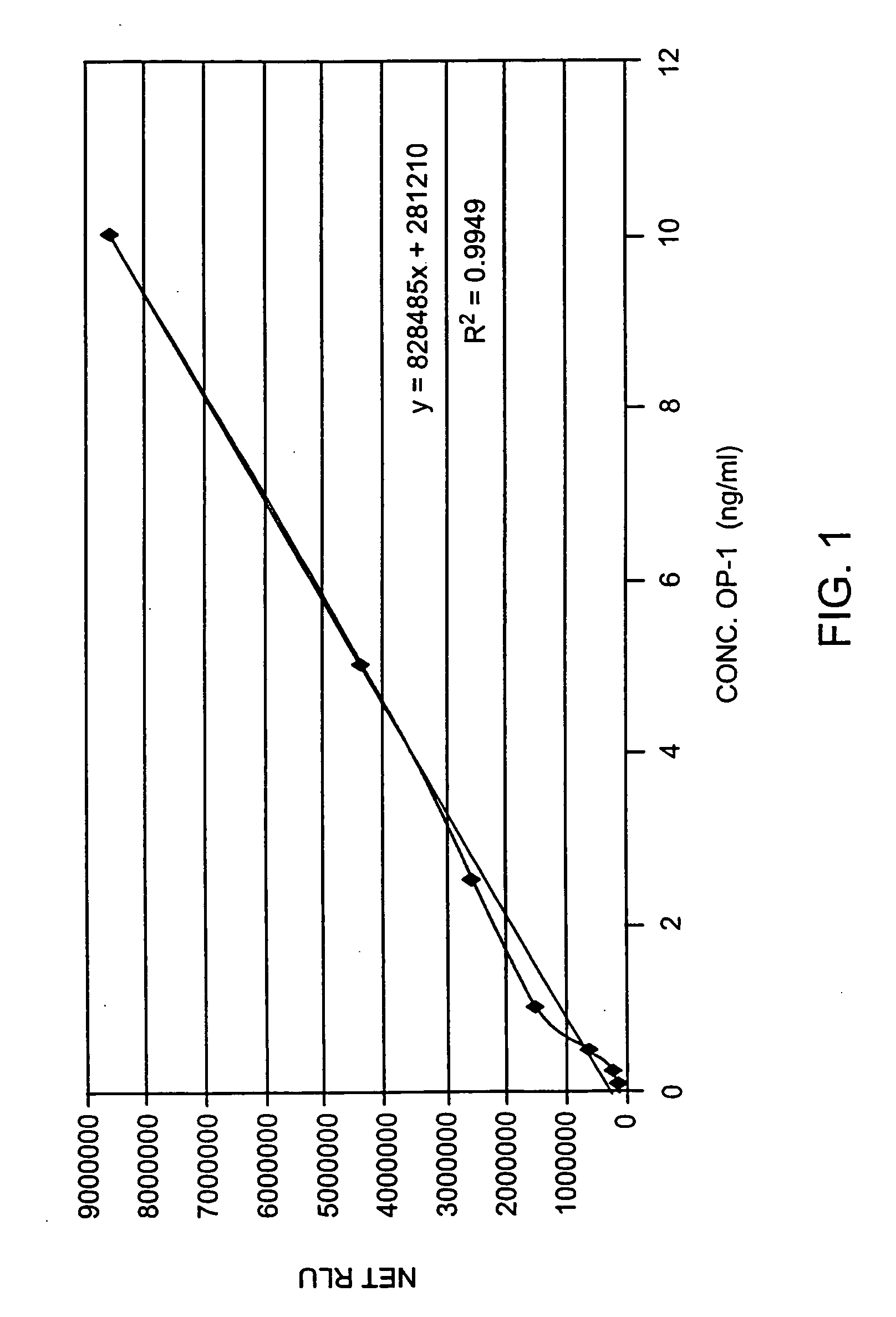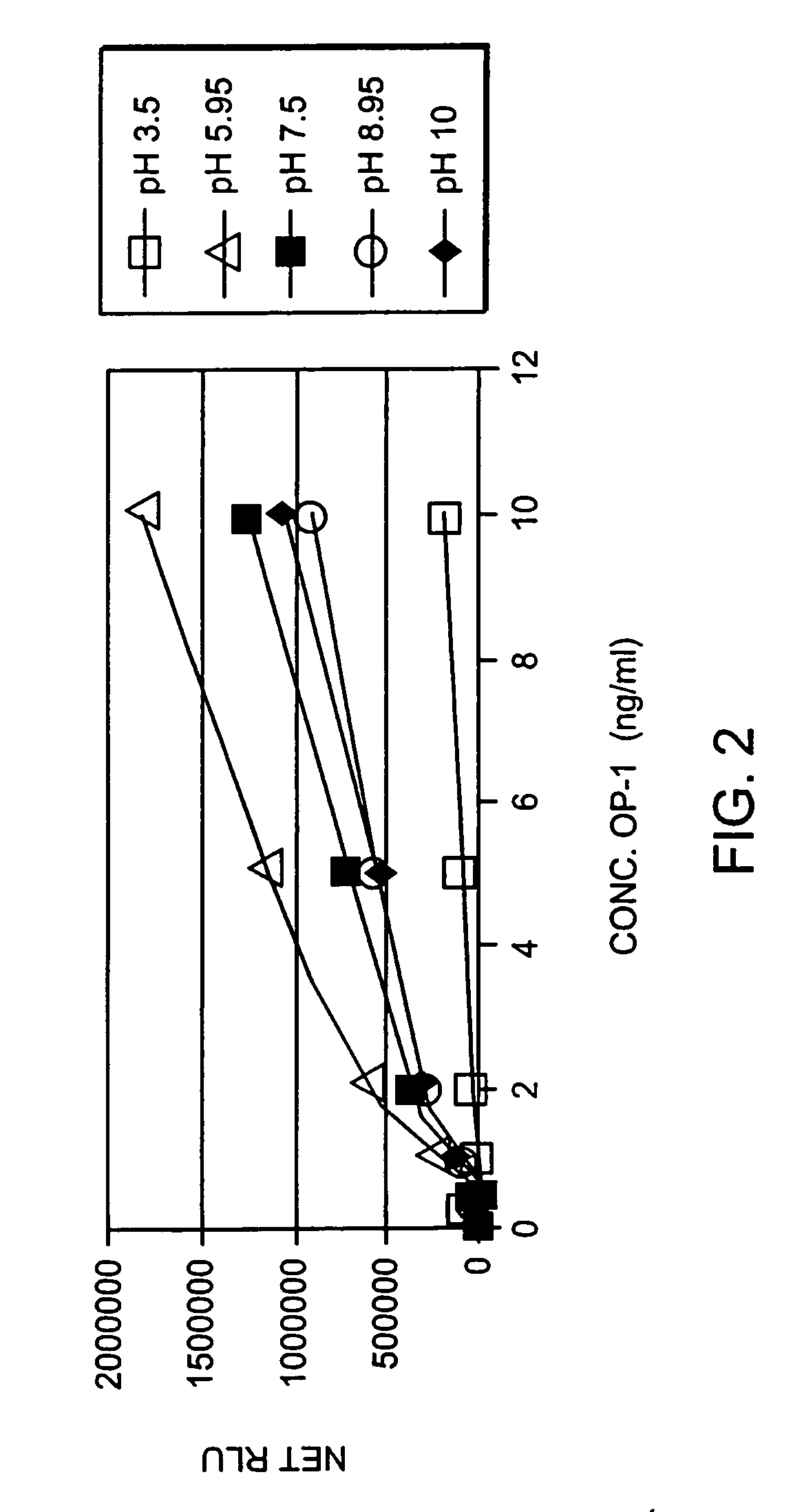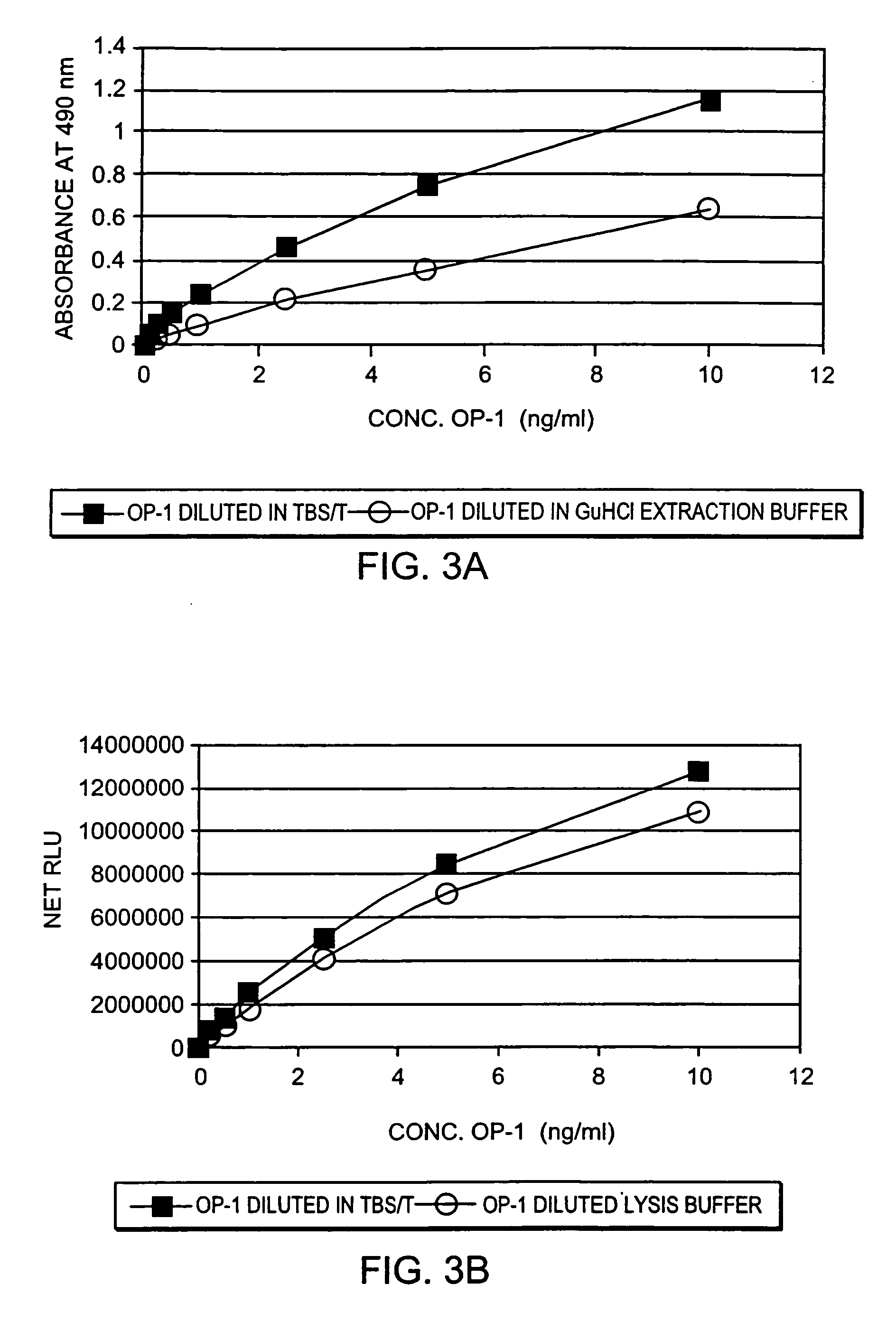Methods of using bone morphogenic proteins as biomarkers for determining cartilage degeneration and aging
a technology of bone morphogenic proteins and biomarkers, which is applied in the direction of biochemistry apparatus and processes, instruments, material analysis, etc., can solve the problems of increased susceptibility to disease and injury, decreased anti-inflammatory agent dose in patients, and gradual decline in function
- Summary
- Abstract
- Description
- Claims
- Application Information
AI Technical Summary
Benefits of technology
Problems solved by technology
Method used
Image
Examples
example 1
OP-1 Protein and mRNA Levels Decrease with Increased Age
[0060] The changes in endogenous OP-1 (protein and mRNA) expression with aging of human articular cartilage were studied. In order to assess quantitatively the concentration of total endogenous OP-1 protein in cartilage extracts, a sandwich enzyme-linked immunosorbent assay (ELISA) was developed and compared with Western Blot and reverse transcription polymerase chain reaction (RT-PCR) measurements. Results indicate that there is a correlation between a decrease in total and mature OP-1 protein and OP-1 mRNA with increased age.
Materials and Methods
Reagents
[0061] Human recombinant pro- and mature-OP-1, BMP-6, anti-pro (R2854) and anti-mature (1B12) OP-1 antibodies were obtained from Stryker Biotech (Hopkinton, Mass.). Two other, anti-OP-1 antibodies (#SC-9305 and #MAB354) were purchased from Santa Cruz Biotechnology, Inc. (Santa Cruz, Calif.) and R&D Systems (Minneapolis, Minn.), respectively. Electrophoresis grade reagent...
example 2
OP-1 Protein and mRNA Levels in Rheumatoid Arthritis and Osteoarthritis
[0077] The above-described OP-1 sandwich ELISA was used to determine whether OP-1 protein could be detected in synovial fluid, whether quantitative approaches could be adapted for the assessment of OP-1 protein in synovial fluid, and whether there are differences in the levels of OP-1 protein between normal donors and patients with rheumatoid arthritis (RA) and osteoarthritis (OA). The results suggest that synovial fluid OP-1 is a useful diagnostic and prognostic marker for both RA and OA.
[0078] Synovial fluid was aspirated from subjects with RA and OA as well as from normal joints of human organ donors according to standard methods. Cartilage specimens from 74 joints (13 normal, 25 RA, 29 OA and 7 other inflammatory diseases) were also obtained. Synovial fluid and cartilage was analyzed by Western Blot with anti-pro and anti-mature OP-1 antibodies and the concentration of OP-1 protein was measured using the OP...
example 3
OP-1 Protein and mRNA Levels Decrease in Osteoarthritis
[0086] Human normal cartilage derived from normal newborn and normal adult donors with no documented history of joint disease were obtained according to standard procedures. Osteoarthritis cartilages (OA) were removed from patients diagnosed with OA who underwent knee arthroplasty. Three samples of each type were tested. RT-PCR of OP-1 and GADPH mRNA was performed as described in Example 1. Levels of OP-1 mRNA in normal newborn and normal adult cartilage were similar, whereas OP-1 mRNA expression in OA cartilage was up-regulated two to three-fold (Table 2).
TABLE 2OP-1 mRNA Expression In Human Articular CartilageType of CartilageOP-1 / GADPH# specimensNormal newborn cartilage0.518 ± 0.066N = 3Normal adult cartilage0.567 ± 0.067N = 3OA cartilage1.148 ± 0.234N = 3P
[0087] OP-1 protein was extracted from tissues with 1 M GuHCl in the presence of protease inhibitors, lyophilized, and analyzed by Western Blot under non-reduced condit...
PUM
 Login to View More
Login to View More Abstract
Description
Claims
Application Information
 Login to View More
Login to View More - R&D
- Intellectual Property
- Life Sciences
- Materials
- Tech Scout
- Unparalleled Data Quality
- Higher Quality Content
- 60% Fewer Hallucinations
Browse by: Latest US Patents, China's latest patents, Technical Efficacy Thesaurus, Application Domain, Technology Topic, Popular Technical Reports.
© 2025 PatSnap. All rights reserved.Legal|Privacy policy|Modern Slavery Act Transparency Statement|Sitemap|About US| Contact US: help@patsnap.com



